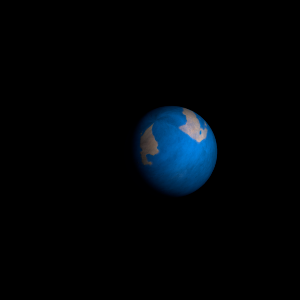|
|
Space Astro
|
Info for exoplanet "Teus Cyl"
| Scientific (actual) data |
|---|
| Name | Kepler-763 b |
| Planet status | Confirmed |
| Radius | 0.112 |
| Orbital period | 1.19655 |
| Semi major axis | 0.0205 |
| Orbit eccentricity | 0 |
| Inclination | 87.27 |
| Discovered | 2016 |
| Updated | 2025-11-04 |
| Tconj | 2454970 |
| Impact parameter | 0.332 |
| Temperature (kelvin) | 1414 |
| Publication | Announced on a website |
| Detection type | Primary Transit |
| Radius measurement type | Primary Transit |
| Alternate names | KIC 10141900 b, WISE J192834.69+470926.5 b, TIC 63130782 b, KOI-1082.03, 2MASS J19283467+4709264 b, KOI-1082 b |
| Star name | Kepler-763 |
| Right ascension | 292.14° |
| Declination | 47.16° |
| Mag v | 15.96 |
| Mag j | 14.24 |
| Mag h | 13.758 |
| Mag k | 13.752 |
| Star distance | 962.46 |
| Star metallicity | 0.01 |
| Star mass | 0.85 |
| Star radius | 0.878 |
| Star sp type | K0V |
| Star age | 4.79 |
| Star temperature | 5080 |
| Star alternate names | KOI-1082, KIC 10141900, WISE J192834.69+470926.5, 2MASS J19283467+4709264 |
| Wikipedia article | Kepler-763 b |
Back
| |
| Fictional info (?) |
|---|
| Suggested name | Teus Cyl |
| Planet type | Hot planet |
| It has the longest rotation period (445 days) of any planet in its solar system and rotates in the opposite direction to most other planets.
The volume of water ice in the south polar ice cap, if melted, would be sufficient to cover the entire planetary surface to a depth of 12 meters. |
| Atmosphere | Molecular hydrogen | 59% |
| Ammonium hydrosulfide (NH4SH) | 23% |
| Sulfur dioxide | 14% |
| Hydrogen chloride | 2.1% |
| Formaldehyde | 0.91% |
| Helium | 0.7% |
| Carbon monoxide | 0.25% |
| Atmospheric pressure | 0.19 bar |
 |
| No known satellites |
| Google search for Teus cyl |
|
Website by Joachim Michaelis
|
|
|
|